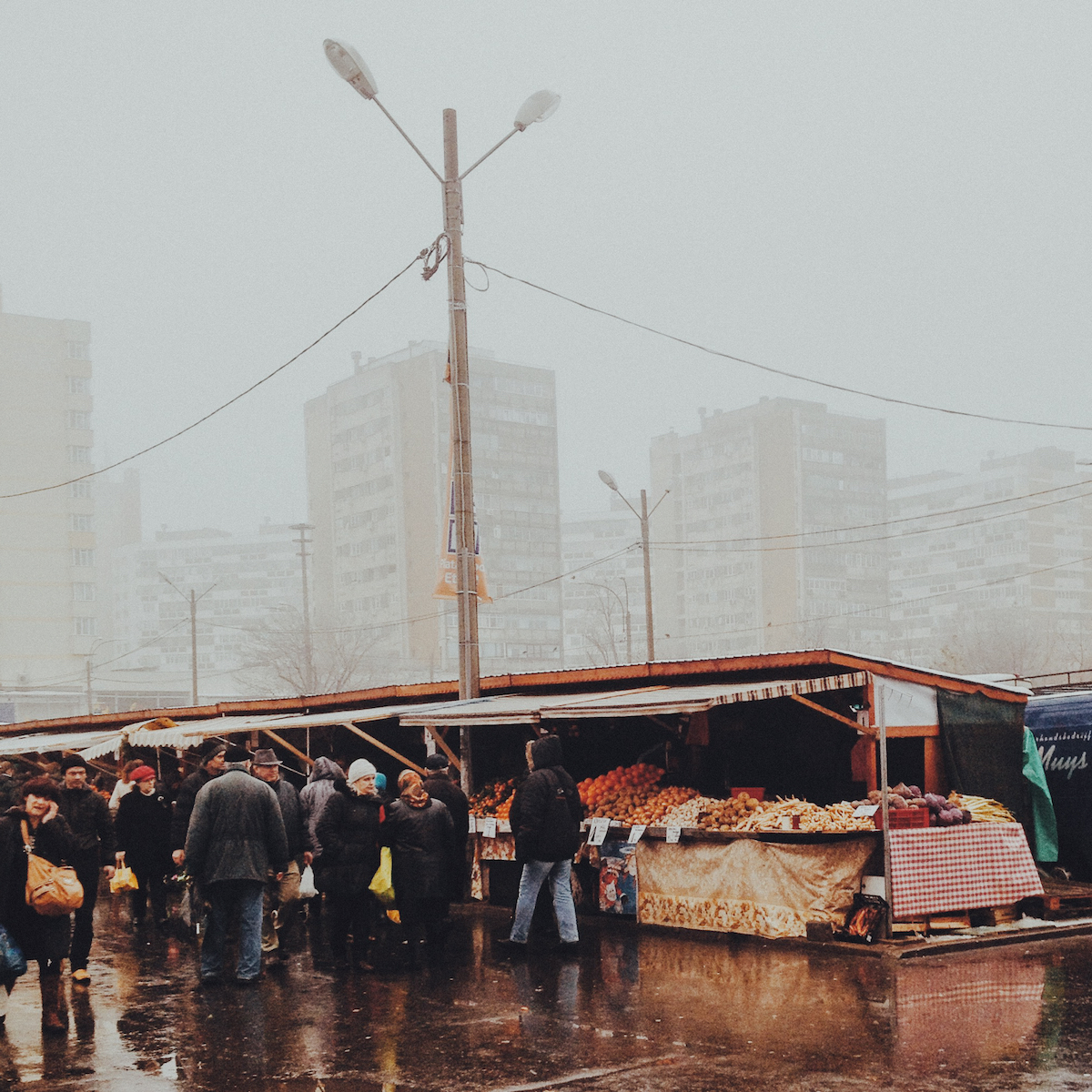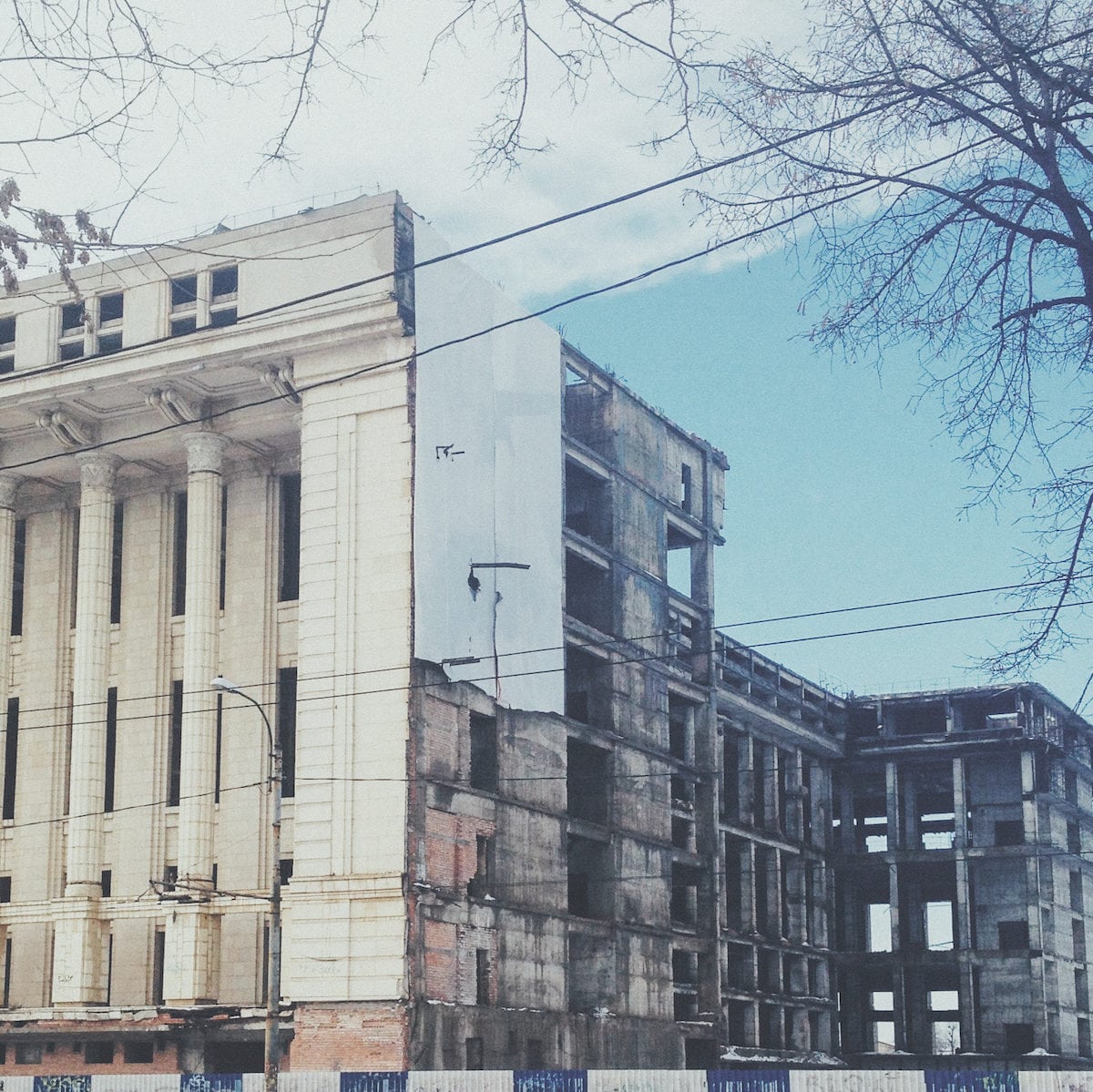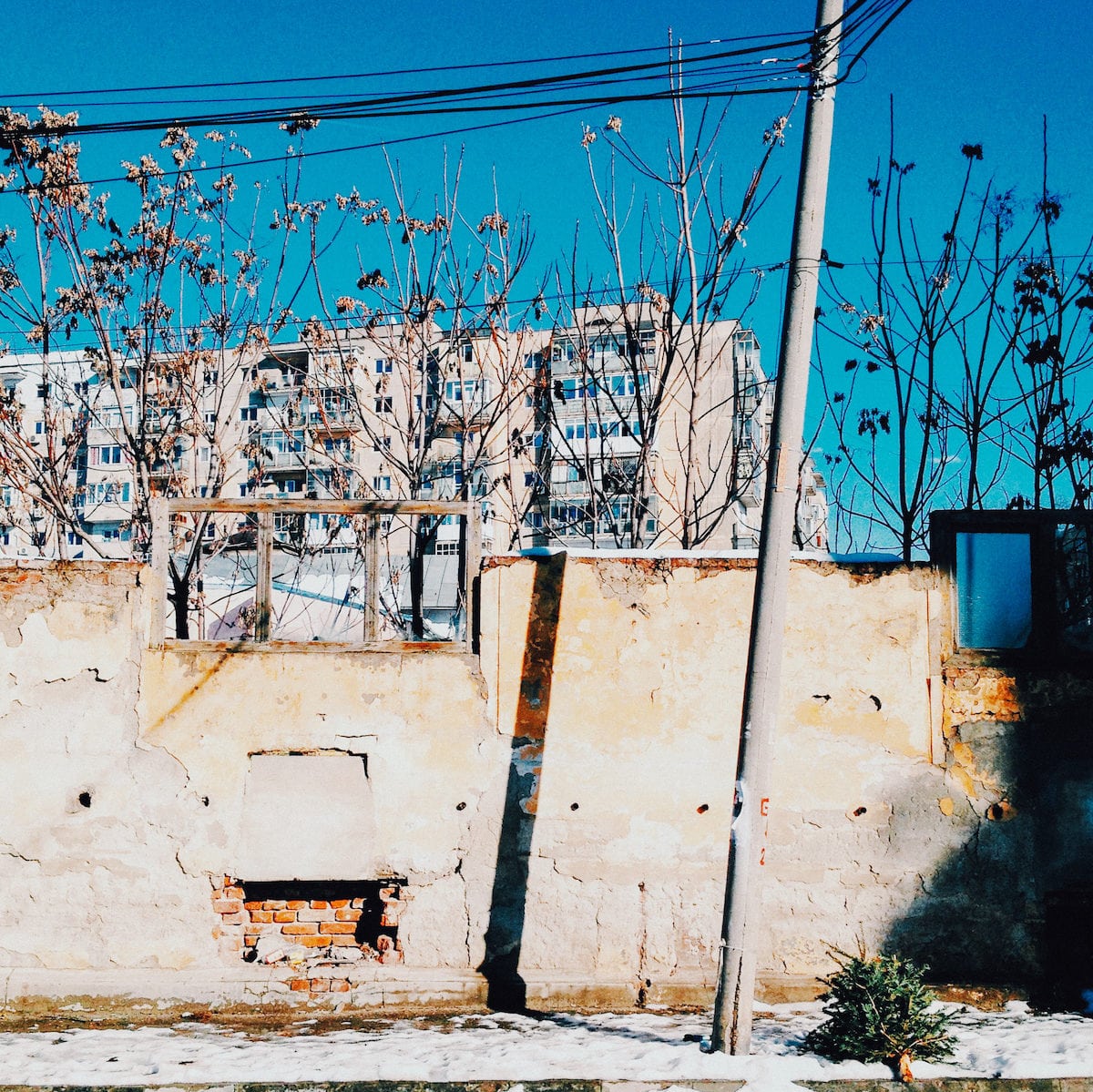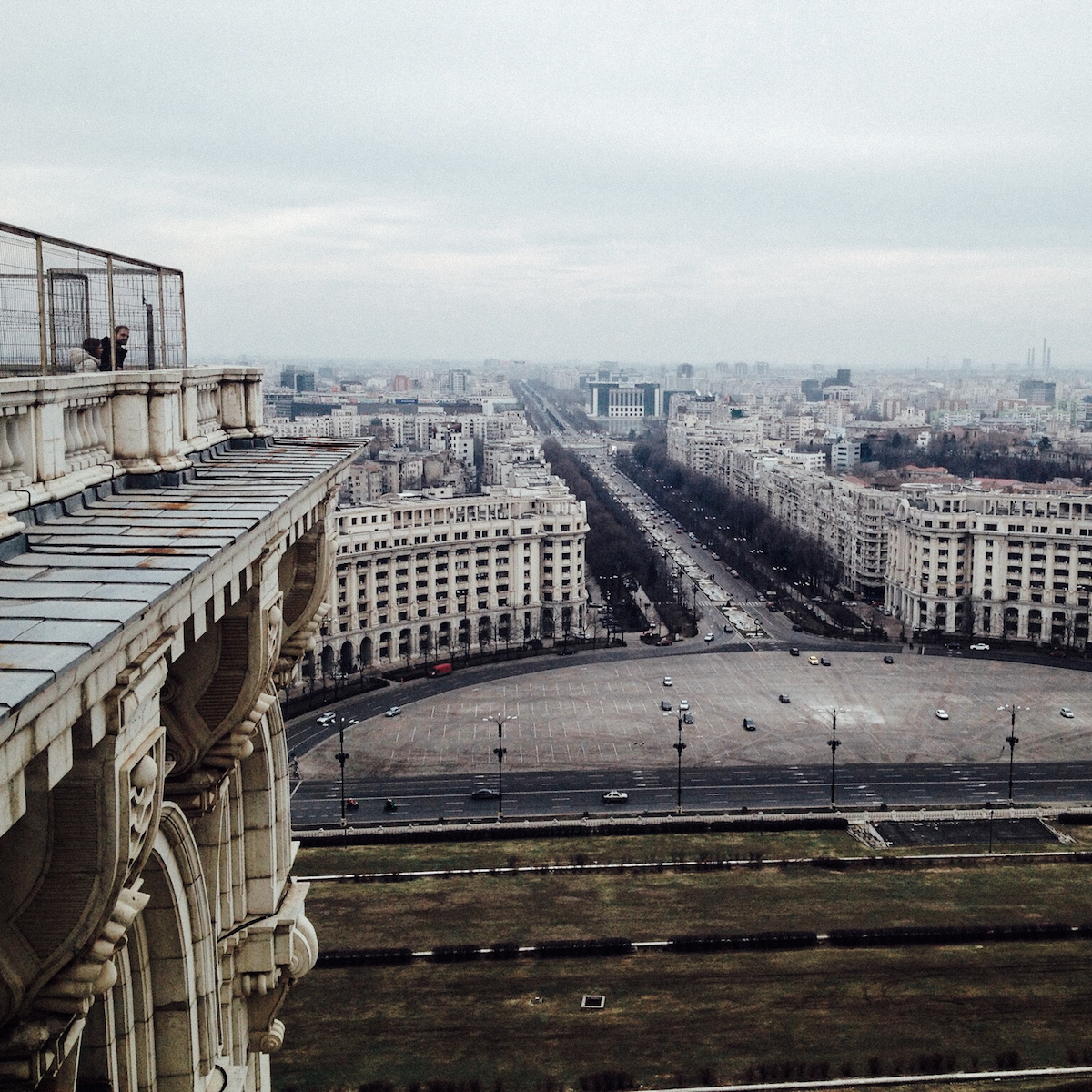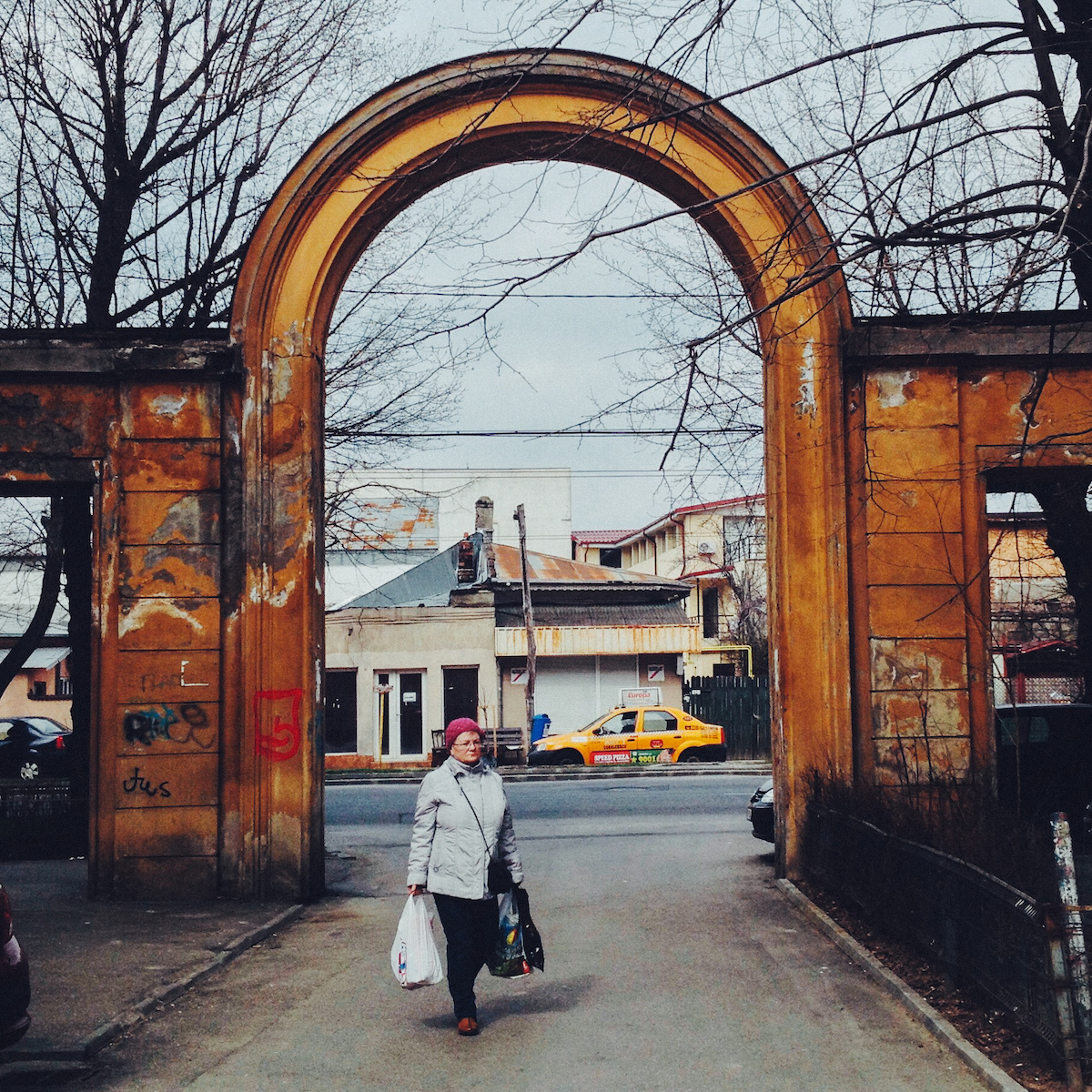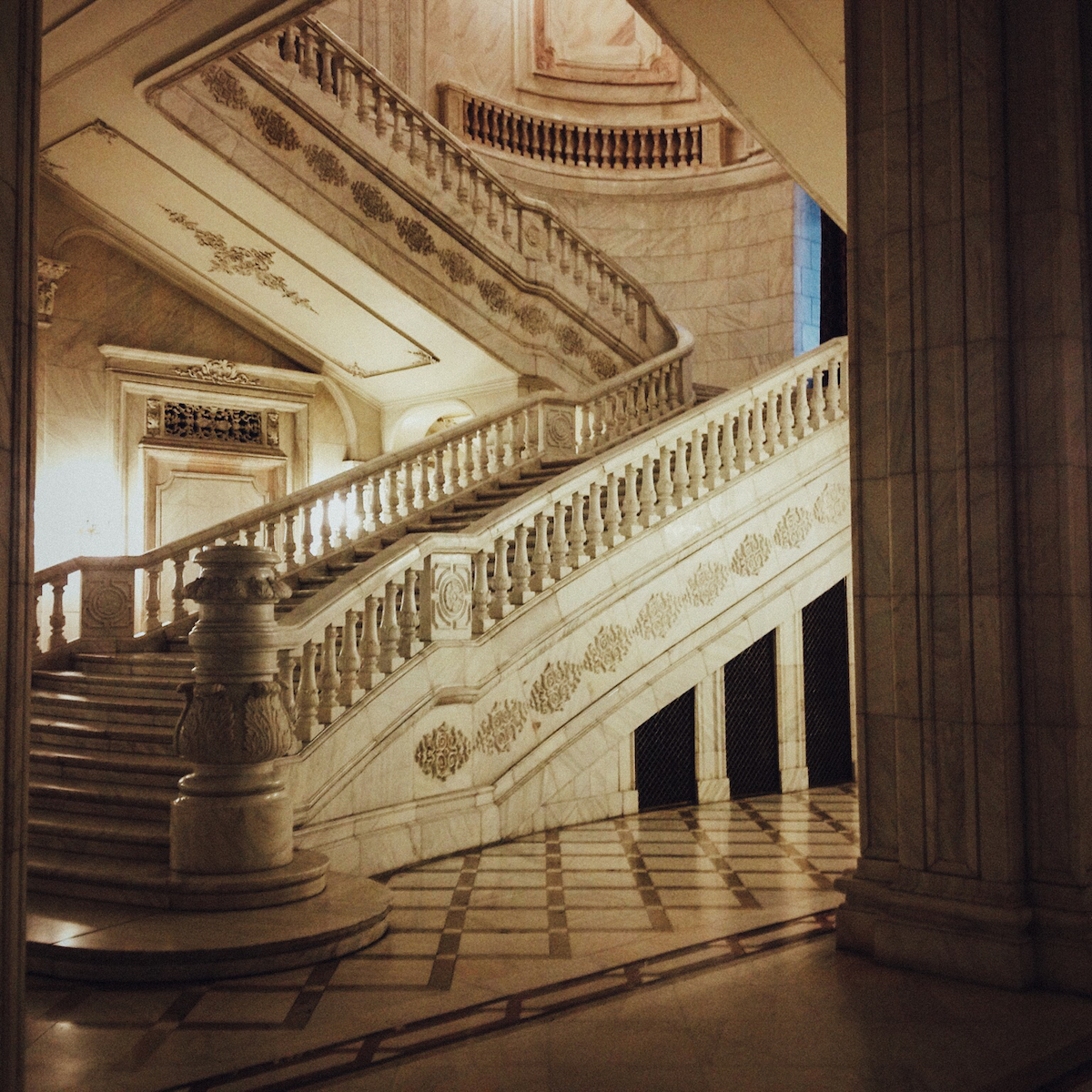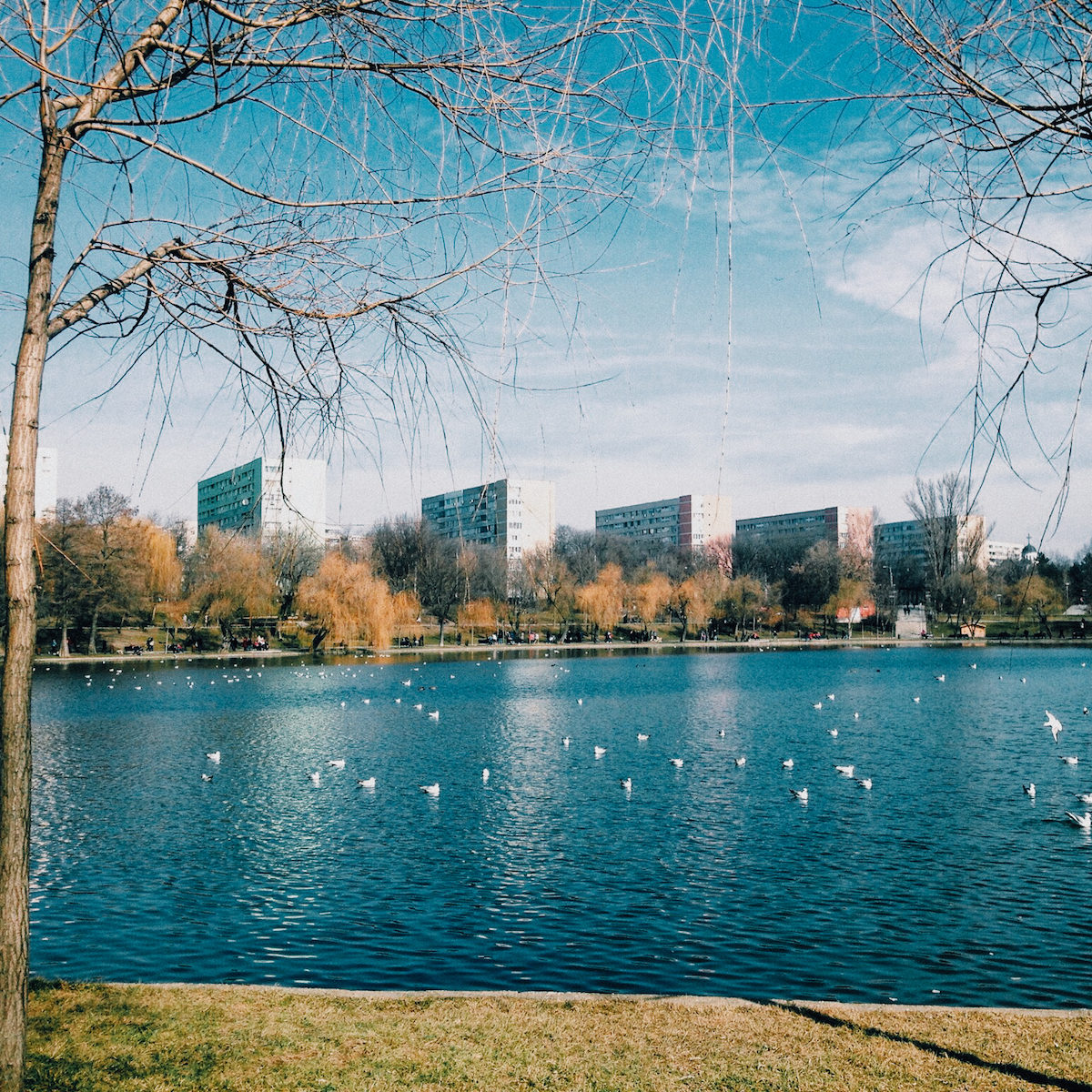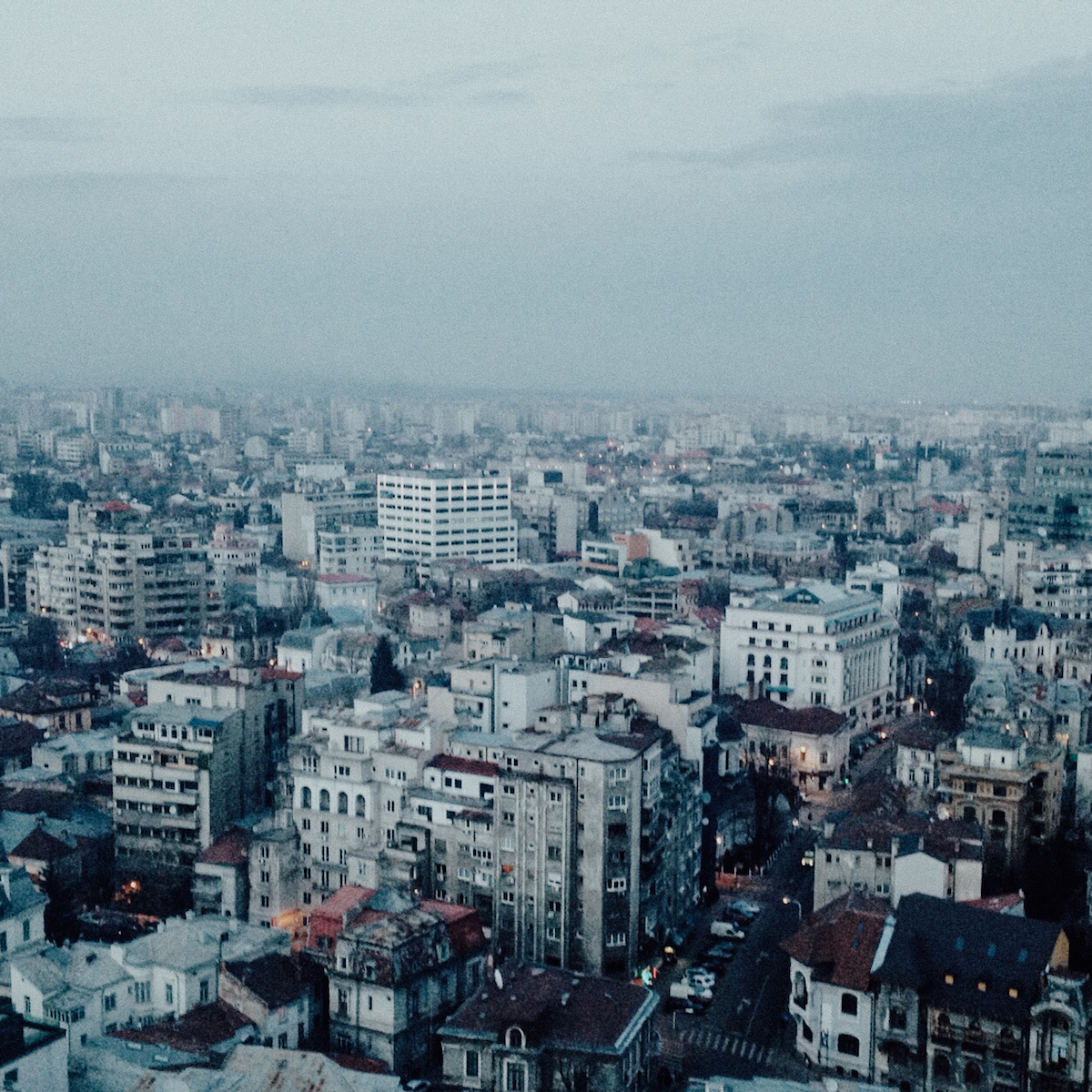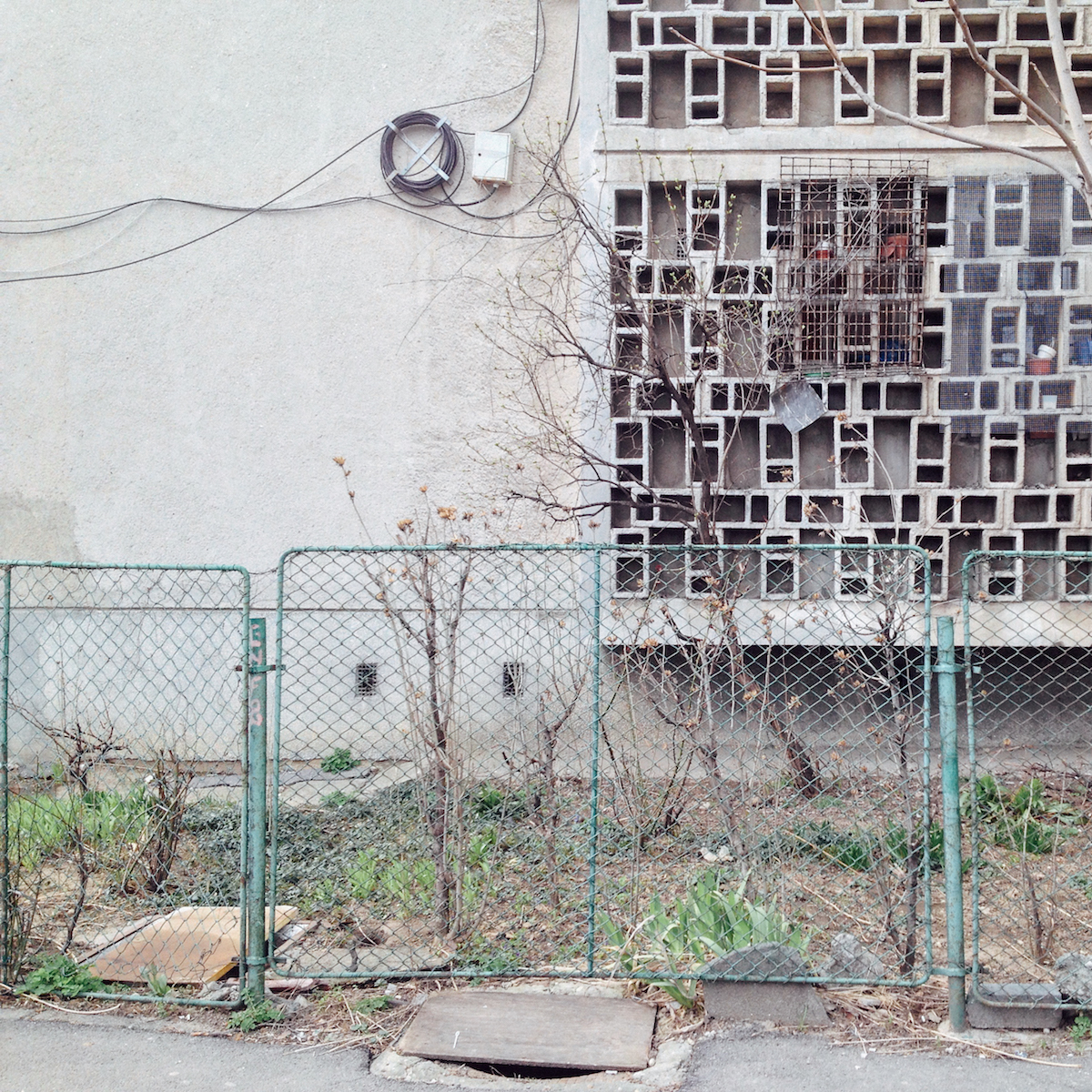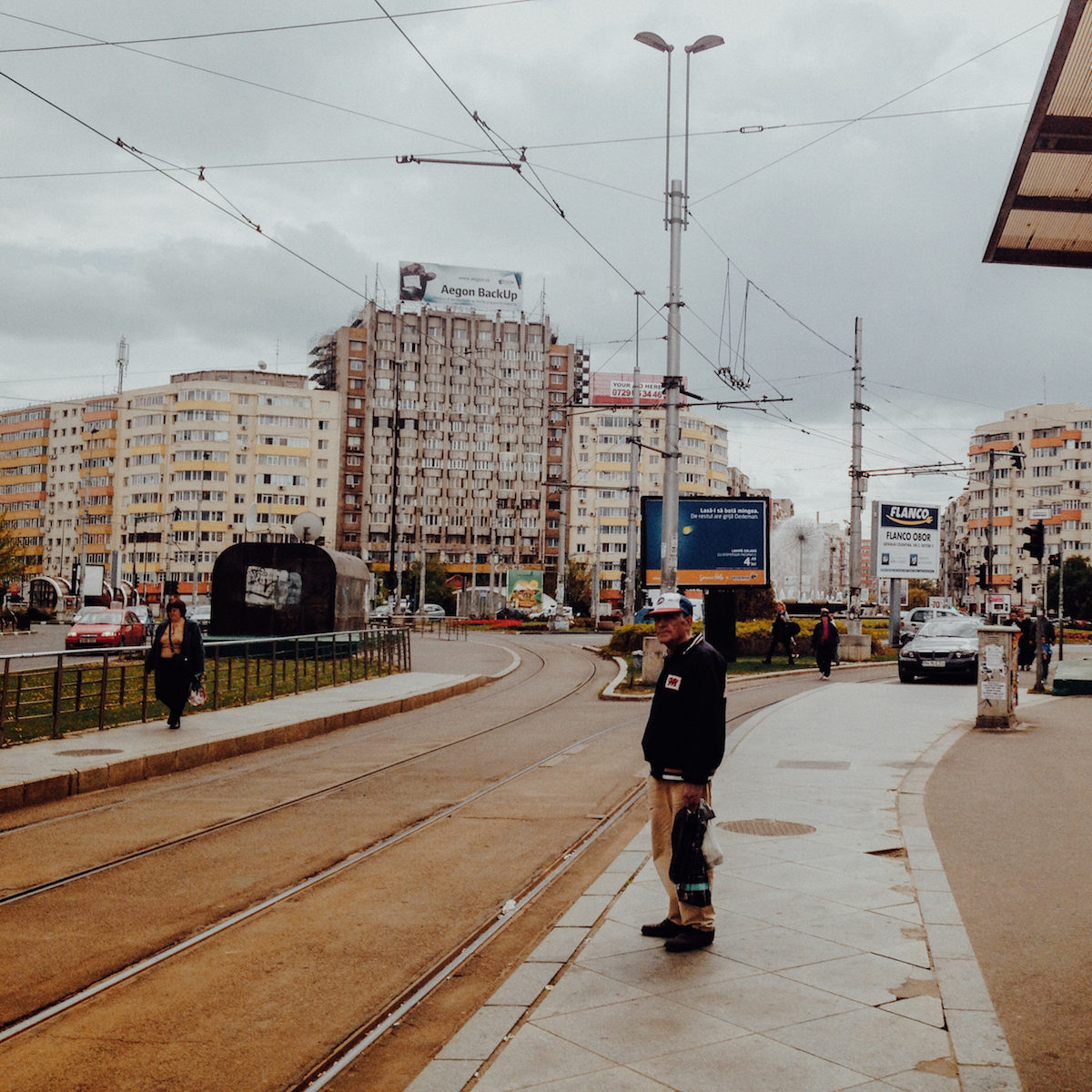There can be few monikers as misleading as Bucharest’s nickname, “the Little Paris of the East.” For a start, as the sixth largest city in the EU, it has a sprawling scale that inspires long exploratory rambles. While the French capital is defined by order and consistency, its Romanian equivalent is heterogeneous and chaotic, the urban equivalent of a pick ’n’ mix counter. Tightly-packed avenues quickly give way to winding low-rise residential roads of detached homes. A single street might contain seventeenth-century Orthodox churches, ornate Habsburg-style mansion blocks, fantastical turreted villas with Ottoman-inspired detailing, art deco hotels and communist-era concrete blocks. Glassy contemporary offices sprout out of aged stone facades, and crumbling dereliction rubs shoulders with the immaculately restored. Walking around Bucharest can feel like warping between several different cities at once.
This is at least partially the result of a particularly tumultuous history. In the twentieth century, Bucharest endured wartime bombing, several severe earthquakes and a sequence of oppressive regimes eager to reshape the city to suit their whims. The last and lengthiest of these, under the nationalist neo-Stalinist Nicolae Ceaușescu, gave the city its most regular, unified district, the Centrul Civic. This inhumanly-scaled patch of anodyne tenement buildings was inspired by a trip to North Korea and required the destruction of about a quarter of Bucharest’s historic centre. The area’s main boulevard, the Unirii, terminates at the Palace of the Parliament, the heaviest and second largest administrative building in the world. Despite being occupied by both Romanian parliamentary houses and several museums, only a fraction of its 1,100 lavishly furnished rooms remain occupied. A monumental fusion of brutalist gigantism and baroque flourish, its novelty pales when you consider that its construction by forced labour caused an estimated 3,000 deaths.
“Walking around Bucharest can feel like warping between several different cities at once”
Hidden away in the palace’s north-west corner you’ll find something more edifying: MNAC, the National Museum of Contemporary Art. It’s the natural first port of call for those who wish to delve into the country’s modern and contemporary artistic output. The current season includes the early works of the experimental photo-collagist and architect Iosif Király, a joint exhibition of married painters Georgeta Năpăruș and Octav Grigorescu, and a show of Bucharest native Tiberiu Căpudean’s Naked project, charting gay and bisexual men across the world. Although predominantly focused on Romanian art, MNAC is also presently exhibiting the most comprehensive survey to date of the Israeli artist Yael Efrati.
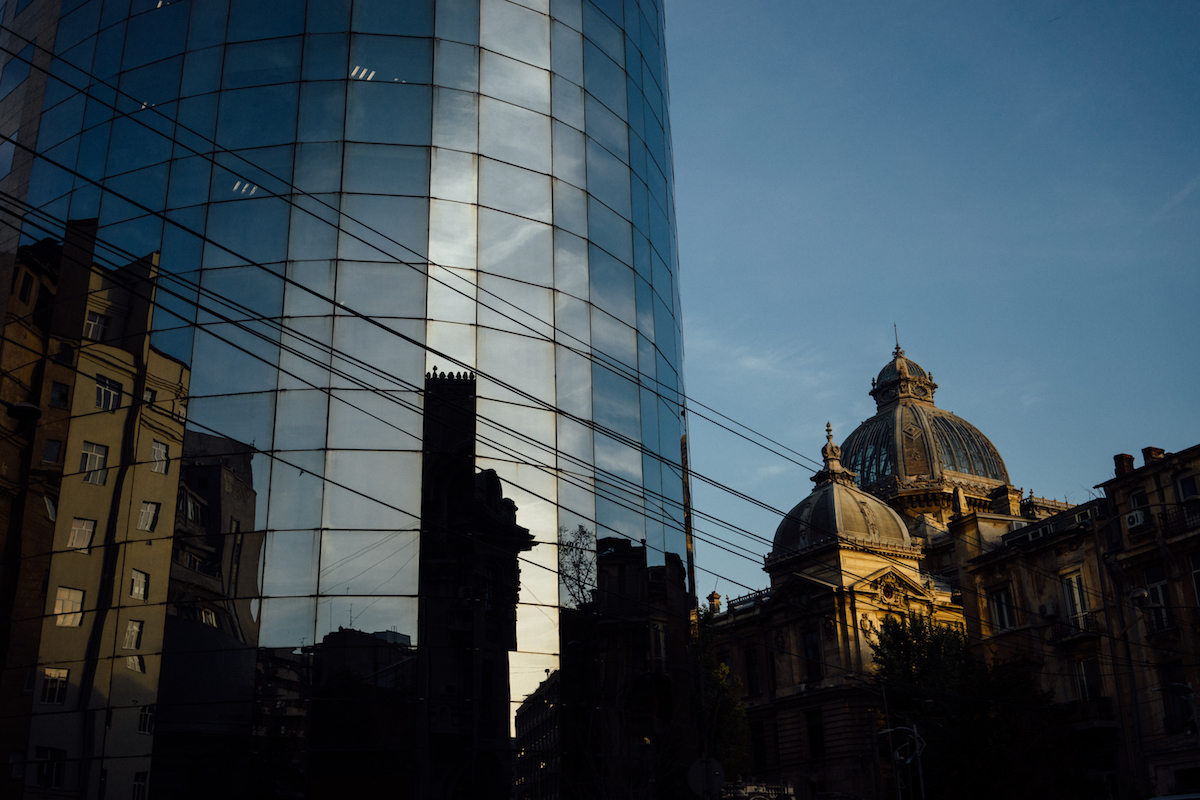
Walk north of the Centrul Civic’s wide expanses and you’ll come to the tightly packed Centru Vechi or old town, refurbished in the past decade. By day, it is all winding pedestrianized alleys, painted churches, opulent arcades and imposing Second Empire-style municipal structures. There is a profusion of cafés and restaurants, ranging from the art nouveau Caru’ cu Bere, popular with tourists and locals alike, to The Urbanist, a paradigmatic hipster haunt. By night, however, the old town becomes a nucleus for a certain strain of hedonism; in the weekend, roving bands of stags and hens, mostly from outside Romania, turn it into a place best avoided after dark.
The Centru Vechi is bounded from the west by the Calea Victorei, one of the city’s main arteries. Speckled with museums and monuments, it winds up to Piața Revoluției, named for the 1989 revolt that began here and led to Ceaușescu’s violent overthrow four days later. On one side of the square stands the interwar Royal Palace, home to the National Museum of Art of Romania. The former residence’s two wings specialize respectively in European and Romanian art. The former has piece by Rembrandt, El Greco and Tintoretto, while the latter provides an exhaustive, faintly exhausting guide to the country’s artistic heritage, all the way from medieval icons to the modernist sculpture of Constantin Brâncuși and Dimitrie Paciurea.
“The Romanian capital is heterogeneous and chaotic, the urban equivalent of a pick ’n’ mix counter”
If Bucharest’s contemporary art scene has a nexus, it is in the elegant roads to the Piața Revoluției’s north-east, which boasts a smattering of small venues. But many of the city’s finest galleries stand away from this core. Galeria Nicodim, in the almost rural-seeming northern suburbs past Herăstrău Park, takes this to extremes. Its eponymous owner, Mihai Nicodim, emigrated to the US in the 1980s and opened his first gallery in LA in 2006. His recent expansion to Bucharest is a telling barometer for Romania’s burgeoning art scene. The gallery is currently open with the group show The Adderall and the Ecstasy, featuring Adrian Ghenie, Ján Mančuška and many more.
To the south, in the leafy district Cotroceni, is Ivan Gallery, which represents such internationally-known luminaries as Geta Brătescu and the late Paul Neagu. Ivan’s most recent exhibition was a collaboration between Ștefan Sava and Ion Grigorescu, one of Romania’s best-known practitioners. At the moment, the gallery is closed for the summer. To the east, there is Anca Poterasu Gallery, whose artists include Olivia Mihălțianu, Aurora Király and Daniel Djamo. And closer to the centre but hidden down a quiet cul-de-sac is 418 Gallery, which has done much to promote local artists. They recently held an exhibition of the kinetic sculptor Stefan Radu Cretu; previous shows have exhibited Eastern European analogues to abstract expressionism.
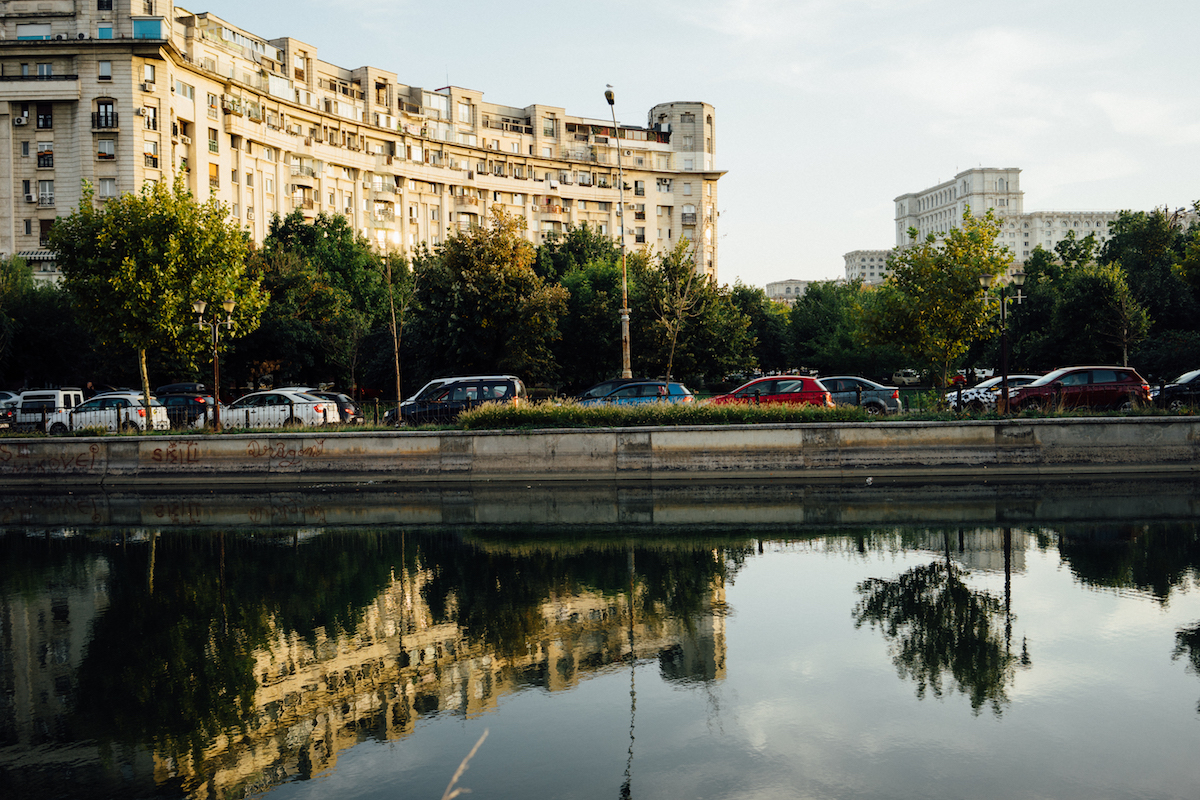
After ranging far and wide through galleries, one would be forgiven for wanting to grab a drink. Bucharest has a distinctly unhurried, laidback late night culture, with bars regularly opening until sunrise. Control Club, just south of the Piața Revoluției, is something of a hub; it serves both as a laid-back place for pleasant evenings and the venue for experimental gigs. Just down the road, the neo-gothic Palatul Universul holds several floors of bars and restaurants, including the botanical cocktail spot Fix Me A Drink. And there are few more pleasant ways to spend a balmy night in Bucharest than Gradina Eden, concealed at the back of a former palace. Somehow managing to encompass a tranquil sunken garden, a raucous subterranean club and a bistro, it’s a fitting place to contemplate this endlessly contradictory, unceasingly varied city.
All images © Charlotte Kühlbrandt
SaveSave
SaveSave
